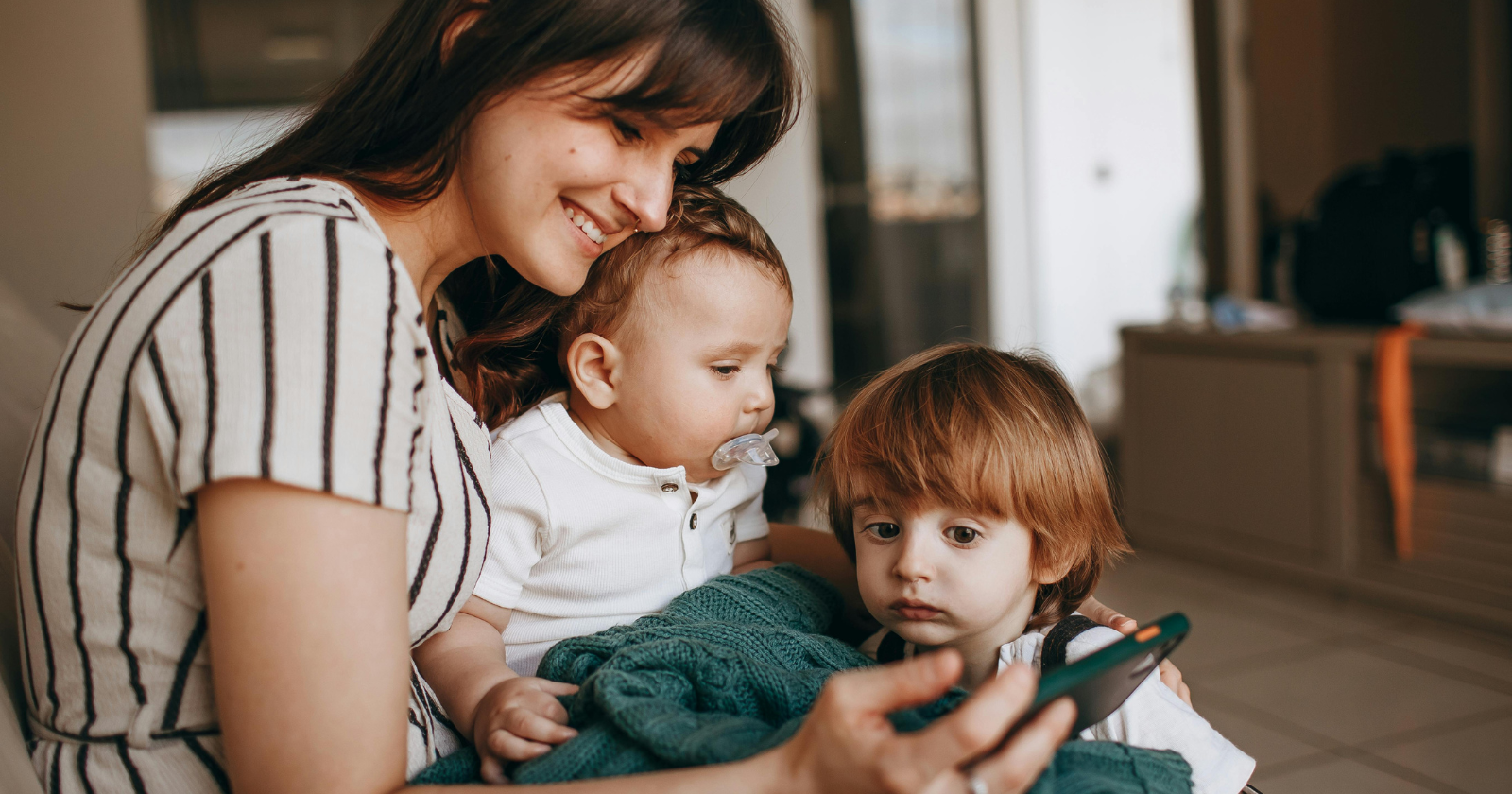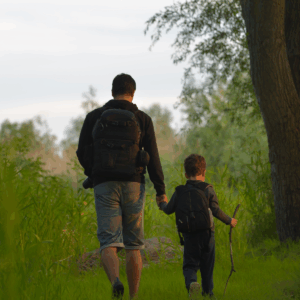Feeling close to our kids doesn’t come from big speeches or grand gestures. It’s built in tiny moments—often with a few well‑chosen words. Over the years (first as a dad, now as a granddad who does a lot of park‑bench listening), I’ve noticed that emotionally mature parents tend to use the same kinds of phrases.
They’re simple. They’re steady. And they quietly say, “You’re safe with me.”
Here are 8 phrases that build trust fast—and how to use them at home without sounding like a self‑help robot.
1) I’m listening. Tell me more.
You can feel the difference, can’t you? “Why did you do that?” puts kids on defense. “I’m listening. Tell me more” lowers their shoulders.
Try it when your child hesitates or seems braced for judgment. Then actually listen. No interrupting, no “teachable moment” right away. Keep your face calm, your voice soft, and your phone nowhere in sight.
A little trick I use: after they talk, I pause three seconds. That silence invites the next layer of truth. Often, what they say after the pause is the real nugget.
Why it works: Being heard is the foundation of trust. Kids (like adults) open up when they feel you won’t pounce.
2) Do you want comfort, a sounding board, or ideas?
One of my grandsons once came home furious about a group project.
My reflex was to fix the whole situation before he’d finished his first sentence. Instead, I sat on my hands and asked this question. He said, “Comfort.” So I made hot chocolate and just nodded while he vented. Ten minutes later he was done—and he’d already figured out what to do next.
Let them choose the kind of help. If they want ideas, ask permission before offering: “Want to brainstorm two or three options together?” If they want a sounding board, reflect what you’re hearing: “So the partner wasn’t pulling their weight and you felt stuck.”
Why it works: Choice equals respect. Respect equals trust. This single question also shuts down our urge to overfunction for them.
Related Stories from The Artful Parent
3) Thank you for telling me. You’re not in trouble.
If your child expects a lecture, this line is like a warm blanket. Use it the moment they share something risky—breaking curfew, a tough grade, a friendship mess, a text you wish they hadn’t sent.
Say it first. Then gather the facts. Then, if a consequence is needed, make it proportionate and clear. But don’t rush the process. Lead with safety.
I remember a late‑night call years ago—my teenager had stalled the car. The first words out of my mouth were these. We sorted the rest out easily because we’d protected the most important thing: the relationship.
Why it works: It teaches kids that honesty buys connection, not punishment. And that means next time, they’ll call you sooner.
4) That makes sense. Your feelings are valid.
“I’m fine.” “It’s not a big deal.” “Whatever.” Those phrases often hide a lot. When kids risk telling us they feel jealous, ashamed, or afraid, our job is to meet them where they are, not where we wish they were.
Try, “That makes sense. Your feelings are valid.” Then add a simple reflection: “Anyone would feel left out if their friends paired up without asking.” You’re not endorsing bad behavior; you’re naming the inner weather so you can help them navigate it.
- I retired in Thailand at 67—here’s why it was the best decision of my life - Global English Editing
- 8 hobbies that secretly make you more influential in social circles - Global English Editing
- People who have no close friends in their 70s usually went through these 8 childhood experiences without realizing it - Global English Editing
A short add‑on I like: “Nothing wrong with you for feeling this. Let’s figure out what helps.”
Why it works: Validation tells kids they’re not broken. People trust the person who makes their inner world feel normal.
5) I could be wrong—what do you think?
This one takes a little humility. It also pays long‑term dividends. Kids trust parents who can admit they don’t have a monopoly on wisdom.
Use it when you’re tempted to decree. “I could be wrong—what do you think is fair for weekday screen time?” You might be surprised by their answer (and their willingness to stick to it when they help set it).
Anecdote time. On a rainy Saturday, I was itching to give my granddaughter a list of “productive” ideas. Instead I tried this line. She sketched out her own plan: thirty minutes of chores, then an hour of painting, then a movie together. It was better than my plan—and she owned it.
Why it works: Humility builds credibility. Credibility builds trust. It also models the kind of flexible thinking you want them to use with friends and future partners.
6) I trust you to handle this. I’m here if you need me.
This is the phrase you use when you’re ready to stop hovering and start empowering. It’s not a shrug; it’s a vote of confidence with a safety net.
Say it when they’re prepping for a tough conversation, handling a teacher mix‑up, or learning a new skill. Pair it with a question that supports autonomy: “What’s your first step?” If they stall out, offer a handhold: “Want a script to practice, or just a hug?”
A thought that’s helped me comes from a book I’ve mentioned before: Laughing in the Face of Chaos by Rudá Iandê (he’s the founder of The Vessel). One line that fits here: “You have both the right and responsibility to explore and try until you know yourself deeply.”
The book inspired me to swap a lot of my old lectures for curious questions. If you feel perfectionism or control keeps sneaking into your parenting, this new release is a refreshing nudge toward trust and authenticity.
Why it works: Confidence is contagious. When you show faith in their capacity, kids rise to meet it—and they learn you won’t rush in and take over.
7) Let’s repair this—I’m sorry for my part.
Every family has blowups. Emotionally mature parents don’t avoid conflict; they repair quickly. This phrase opens the door without drama.
Here’s a simple structure:
-
Name the impact: “I interrupted and talked over you.”
-
Own it: “That was disrespectful.”
-
Apologize: “I’m sorry.”
-
Offer a path: “Want to try that conversation again after dinner or tomorrow morning?”
No “but you” add‑ons. No lecture disguised as an apology. Just repair.
I still remember the stunned look on my son’s face the first time I tried this sincerely. That was the day he started apologizing back without being prodded.
Trust doesn’t mean we never fracture — it means we know how to mend.
Why it works: Apologies prove the relationship matters more than being right. Kids trust people who take responsibility.
8) Your “no” is okay with me. Take your time.
Consent and boundaries aren’t just for dating. They start at home—around hugs, conversations, photos, and plans. Saying “Your ‘no’ is okay with me” teaches kids that they own their body, their time, and their story.
Use this when you’re asking for a debrief right after school and they’re fried. “Your ‘no’ is okay with me—want to talk after dinner?” Or with relatives who push hugs. “It’s your choice. Fist bump works too.”
A small tweak that helps: when you must insist (doctor’s appointments, school attendance), acknowledge the boundary even as you hold the line.
“You don’t have to like this shot. Your ‘no’ to needles is real. I’ve got you through it.”
Why it works: When kids know they can say no without losing your love, they say yes from a freer place. That’s real trust.
Final thoughts
A few bonus ways to put these phrases to work this week:
-
Plant them in everyday life. Trust grows in the ordinary: car rides, grocery lines, dish duty. Pick one phrase and overuse it for seven days. Watch the temperature drop at home.
-
Slow your pace. Rushing is the enemy of listening. If you’re tight on time, try: “This matters and I have five minutes right now. Want that or should we save it for tonight?”
-
Use your voice like a thermostat. Even, warm, unhurried. Kids notice tone as much as words.
And if you want a gentle, thought‑provoking companion as you build this kind of presence, I’ll repeat my recommendation of Rudá Iandê’s new book, Laughing in the Face of Chaos. He has a way of reminding us that our kids don’t need perfect parents, they need real ones.
As he puts it, “When we let go of the need to be perfect, we free ourselves to live fully—embracing the mess, complexity, and richness of a life that’s delightfully real.”
My insights from the book helped me trade a lot of urgency for curiosity—and closeness followed.
Parenting is hard. We won’t say the right thing every time. But we don’t have to. Trust is a habit: a dozen small choices to listen longer, own our missteps, and show steady faith in the people our kids are becoming.
So which phrase will you try today?



